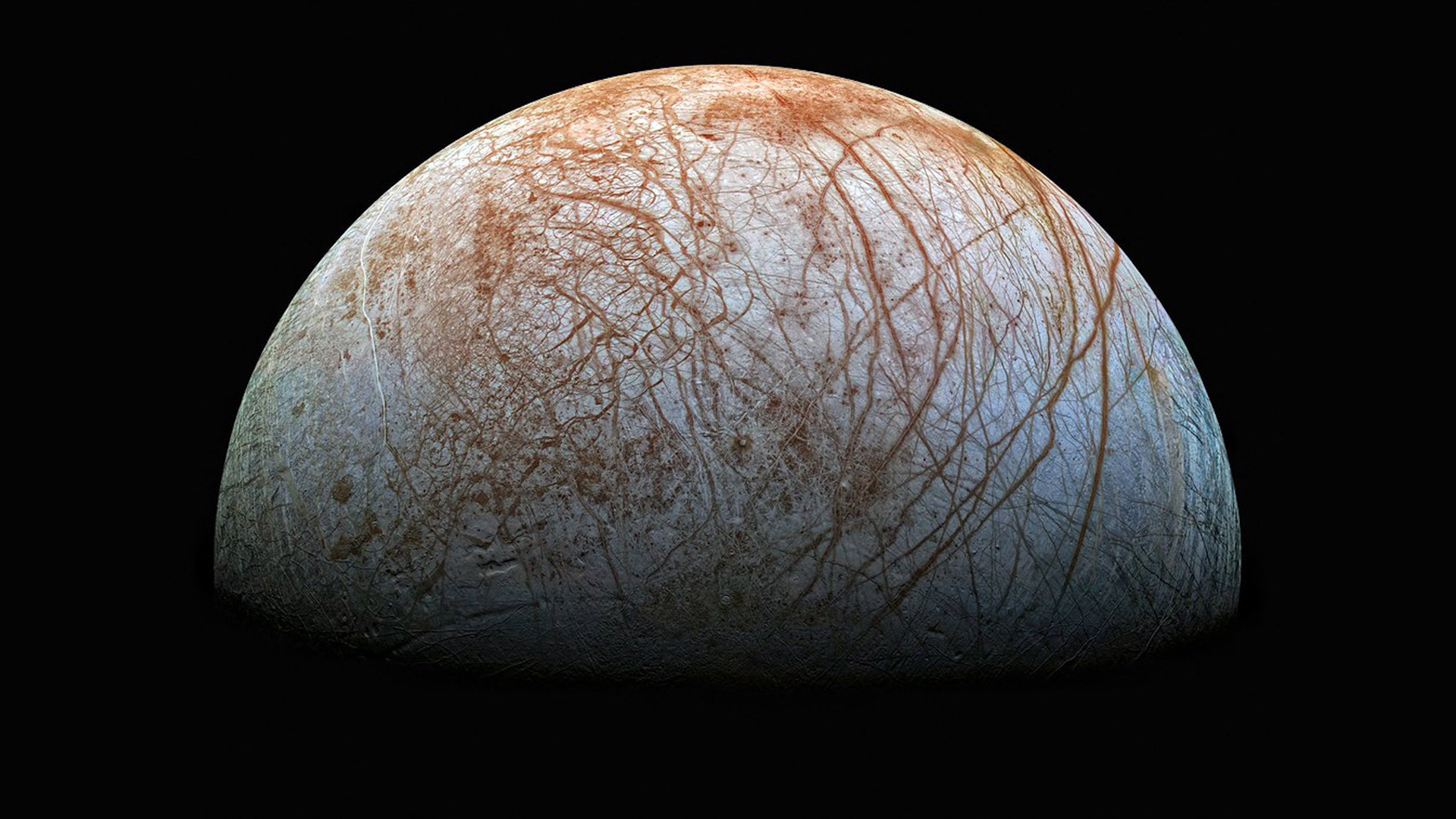 Photo of Europa from NASA's Galileo spacecraft, 1998.
Photo of Europa from NASA's Galileo spacecraft, 1998.
Hurricane Milton could change the timing of the launch of NASA's Europa Clipper spacecraft this month, but mission planners are eager to start the robotic explorer's journey to one of Jupiter's most interesting moons.
Europa is one of Jupiter's larger moons, and it's unique smooth surface has intrigued scientists ever since it was first imaged close-up by the Galileo Jupiter mission in the 1990s.
Planetary Science Institute's Amanda Hendrix explains Europa Clipper will swing into orbit around Jupiter and make 49 close passes of Europa, where researchers think an ocean of water flows beneath an icy surface.
"And those 49 flybys will help us put together all the pieces of the puzzle with all the different datasets to assess Europa's habitability," she said.
Hendrix notes detecting life on Europa is not the top priority this time.
"Maybe we'll go back and search for life with a later mission."
Europa has a distinct lack of impact craters. But it is affected by Jupiter's high radiation fields and massive tidal influence.
Europa Clipper will dodge the worst of Jupiter's radiation by using a wide, elliptical orbit that will occasionally bring it alongside Europa for brief periods of observation. One of the instruments on board was developed by a team at Arizona State University.
The NASA spacecraft will not be alone when it arrives at Jupiter in 2030. The European Science Agency's JUICE spacecraft will already be on-station in the Jovian system, making measurements of Europa along with two other icy moons, Ganymede and Castillo.

By submitting your comments, you hereby give AZPM the right to post your comments and potentially use them in any other form of media operated by this institution.